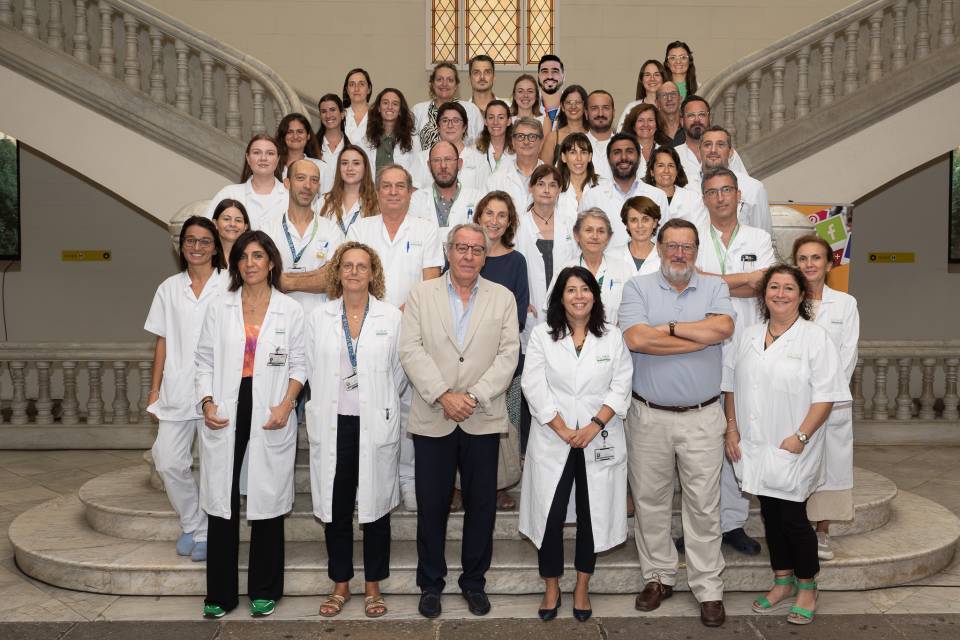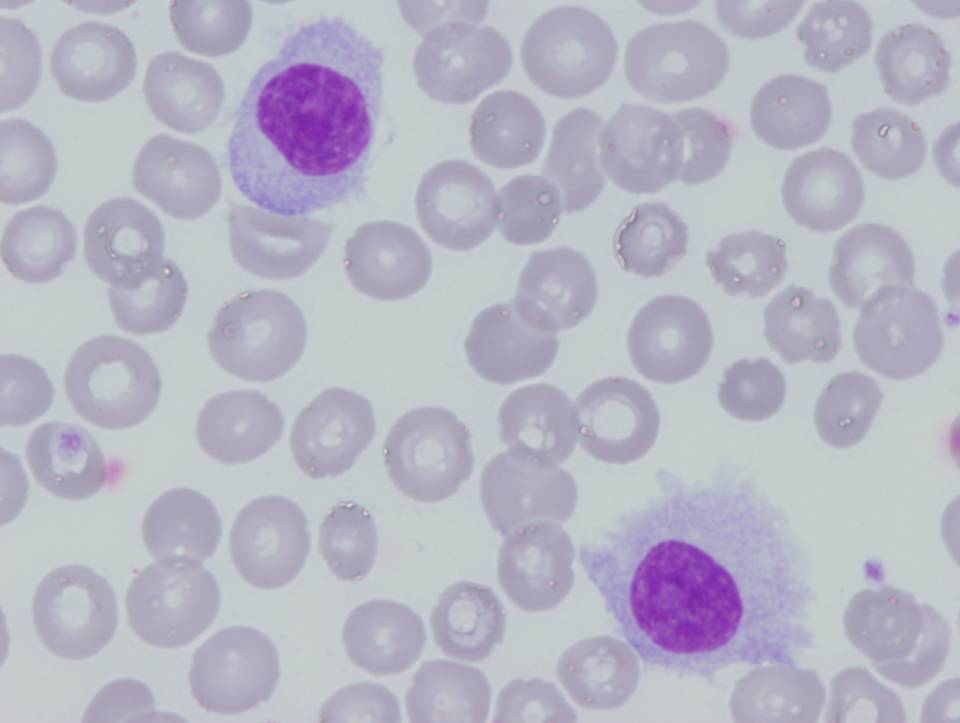- Home
- Organizational structure
- Biomedical Diagnostic Center
- Pathological Anatomy Service
The Pathological Anatomy Department of the Hospital Clínic participates in the following Units:
The Department performs an average of 1,500 intraoperative studies each year that guide the surgery of more than a thousand patients. This allows it to develop an increasingly precise and conservative operation.
The Department continuously incorporates the latest technological innovations and offers citizens everything from state-of-the-art mass sequencing techniques (NGS), which allow the analysis of hundreds of genes simultaneously, to the most sensitive techniques for the monitoring of the minimum residual disease based on digital PCR.
The Department performs about 35,000 biopsies for cancer screening, which promotes early diagnosis of cervicovaginal and colorectal cancer. Each year, it studies the expression of tissues of more than 50,000 proteins, including relevant prognostic markers and therapeutic targets that allow much more accurate personalized treatments to be targeted.
The Department actively pursues strategic alliances with other hospitals and institutions in the area. It is currently collaborating with the Sant Joan de Déu Pediatric Hospital in Barcelona, the Granollers Hospital, the Vic Hospital and other hospitals in Europe, Latin America and Africa. With some of them, such as the Maputo Hospital in Mozambique, they have been holding weekly diagnostic teleconferences through telepathology since 2013.
Currently, the Department has the largest autopsy room in Catalonia, and the only one with the appropriate level of Biosafety to meet the needs of pandemics such as COVID-. It also has state-of-the-art technology to enable the most innovative virtual autopsies to be carried out, which allows the training of students as well as the remote participation of healthcare professionals.
The Department is structured in five sections focused on specific diagnosis and quality in the different subspecialties that make it up, always from a multidisciplinary, integrative and molecular point of view.
Thoracic, Digestive and Metabolic Pathology
- The pathological subspecialties that make up the Section are divided into four major blocks:
- Hepatobiliary and pancreatic pathology
- Digestive pathology
- Thoracic and cardiovascular pathology
- Endocrine pathology
Medical-Surgical Pathology, Dermatopathology and Neuropathology
The pathological subspecialties that make up the Section are divided into four major blocks:
- Neuropathology and Muscle Pathology
- Dermatopathology
- Pathology of the Head and Neck
- Osteoarticular pathology
Genitourinary and Perinatal pathology
The pathological subspecialties of this Section are divided into five major blocks:
- Uropathology
- Breast Pathology
- Nephropathology
- Gynecopathology
- Perinatology and Obstetrics
Hematopathology
The Hematopathology Section, established in 1997, focuses primarily on the laboratory diagnosis of hematological disorders, both congenital non-neoplastic and neoplastic, from an integrated and multidisciplinary perspective.
The unit is structured into five main areas:
- Cytology and Histopathology
- Immunophenotyping / Flow Cytometry
- Molecular Biology
- Conventional and Molecular Cytogenetics
- Hemostasis and Erythropathology
The section is a pioneer in the diagnosis of hematological neoplasms and integrates the results of analytical studies into a single diagnostic report. Diagnoses are based on the 2022 revised classification of hematological neoplasms by the International Consensus Classification (ICC) and the World Health Organization (WHO), in which members of the section actively participated.
It also performs biological monitoring of disease progression during treatment, through integrated studies for the detection of measurable residual disease (MRD).
In its non-oncological diagnostic activity, the section is a national reference center for functional diagnosis in Primary Hemostasis and Erythropathology, where testing requires a high level of technical expertise.
Complex cases are discussed in multidisciplinary consensus meetings involving expert clinicians. The section provides hematological diagnostic services to both the hospital’s clinical teams and other regional hospitals. A strong link between clinical activity and research fosters a high level of innovation and ongoing professional development.
The medical and technical staff are highly qualified and have extensive experience in performing and interpreting diagnostic tests. The team is composed of specialists in hematology and pathology, consultants in human genetics and molecular biology, and laboratory technicians.
In recent years, the Hematopathology Section has incorporated new technologies and services, establishing itself as a highly specialized laboratory, including:
- Next-generation flow cytometry (12-color panels) and MRD testing in multiple myeloma using Next Generation Flow (NGF)
- Next-generation sequencing (NGS) with specific panels for the diagnosis of myeloid and lymphoid neoplasms and chronic lymphocytic leukemia
- Molecular diagnosis and disease monitoring using digital PCR techniques
- Automation of conventional cytogenetics and implementation of optical genome mapping (OGM)
- Differential diagnosis of thrombotic microangiopathies (TMA) using specific functional assays
- Integrated and prenatal diagnosis of congenital erythropathies
- Laboratory diagnosis of platelet function disorders under flow conditions
- Molecular studies of congenital hematologic disorders through whole exome sequencing


